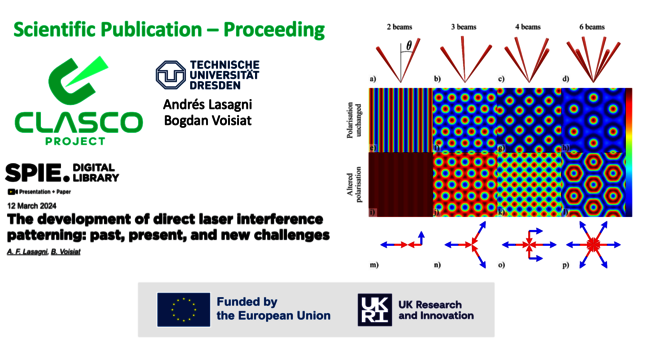DLIP, a laser-based technology, creates functional periodic microstructures through the interference of high-intensity coherent laser beams. This comprehensive review traces DLIP's development from its early stages, highlighting the critical role of innovative optical systems in enhancing precision and control. The paper showcases significant applications of DLIP, such as surface functionalisation, which has revolutionised various industries by improving material properties and introducing new functionalities.
Additionally, the authors discuss the evolving landscape of inline monitoring approaches within DLIP. These advanced techniques are crucial for real-time quality control and process optimisation, addressing the complex challenges that arise in modern DLIP applications.
As we look to the future, the ongoing advancements in optical configurations, process strategies, and monitoring methods will continue to push the boundaries of DLIP technology. The integration of artificial intelligence for robust process control signifies a new era of precision and efficiency in manufacturing.
For a deeper dive into the past, present, and emerging challenges of DLIP, read the full conference proceeding here.
Key Takeaways:
• DLIP's role in enhancing material properties.
• Innovative optical systems pushing DLIP boundaries.
• Emerging inline monitoring techniques for real-time quality control.
Proceedings Volume 12875, Frontiers in Ultrafast Optics: Biomedical, Scientific, and Industrial Applications XXIV; 128750F (2024) doi.org/10.1117/12.3010435


